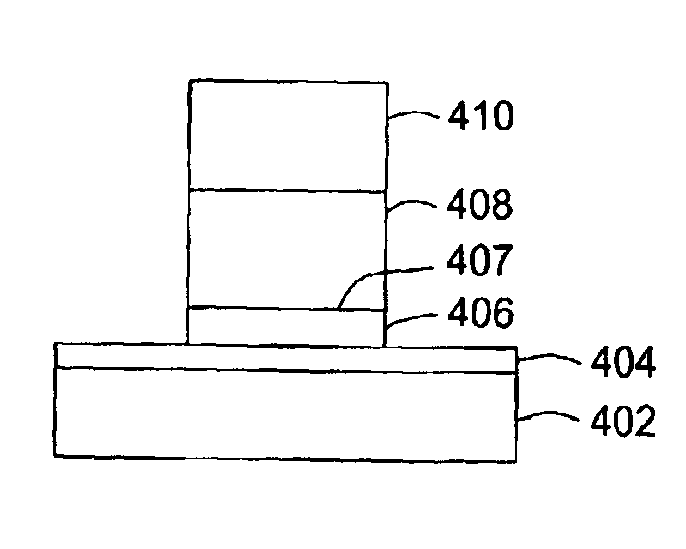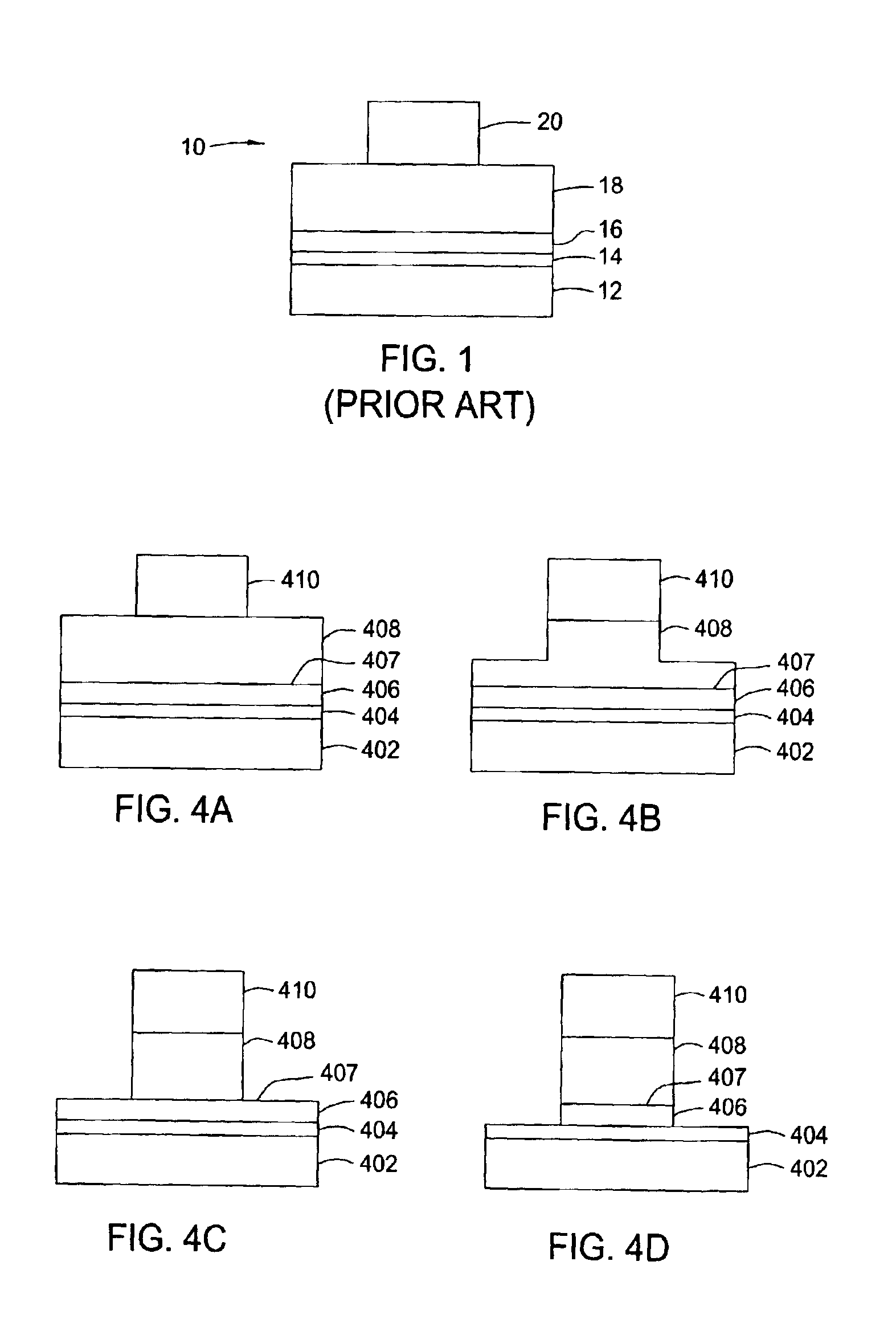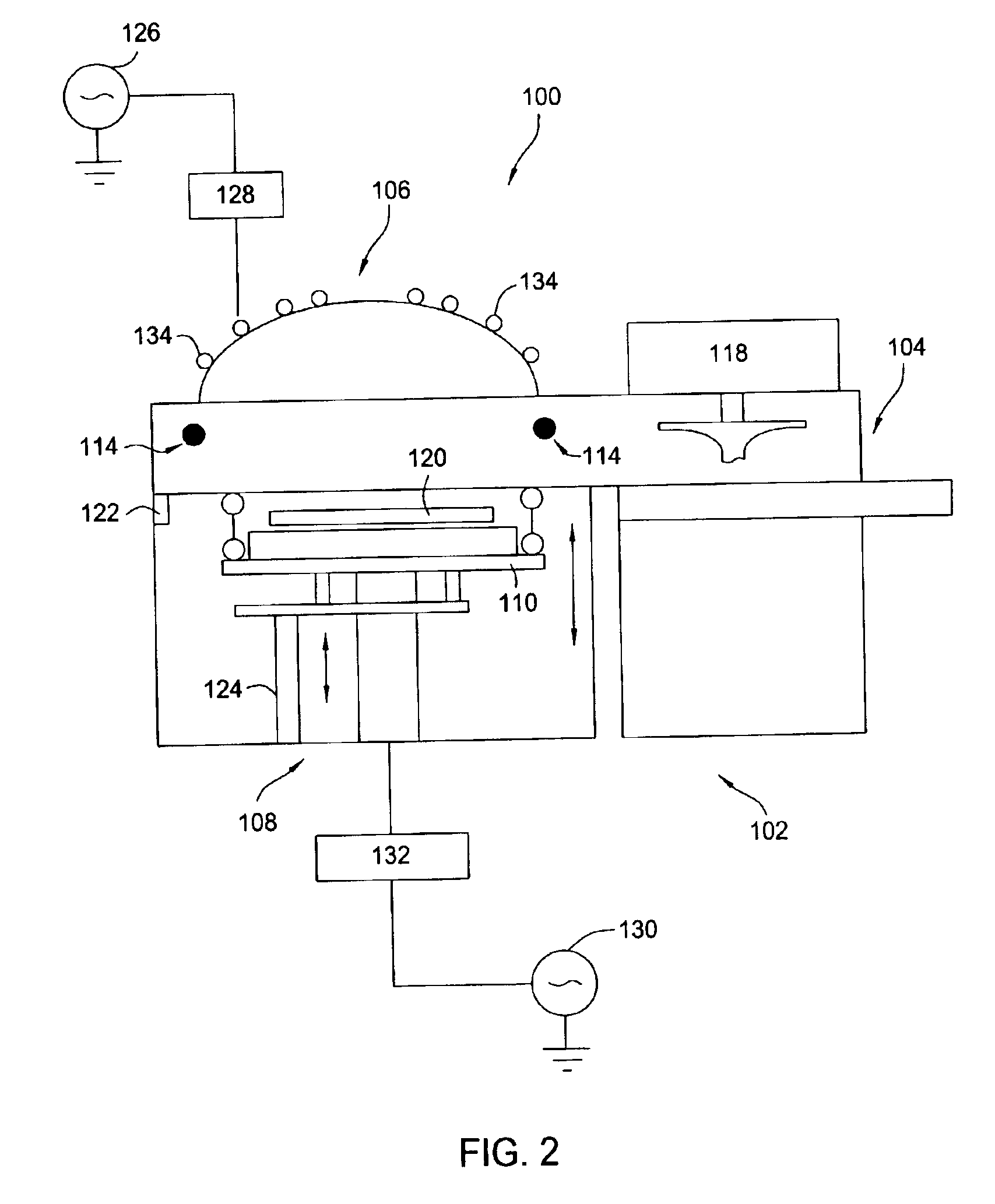High selectivity and residue free process for metal on thin dielectric gate etch application
- Summary
- Abstract
- Description
- Claims
- Application Information
AI Technical Summary
Benefits of technology
Problems solved by technology
Method used
Image
Examples
example 1
[0035]A main etch step was performed under the following process conditions: chamber pressure: 4 millitorr; 350 watts source power; 100 watts bias power; 20 sccm NF3; 70 sccm Cl2; 90 sccm N2; 10 sccm O2. The main etch step was performed for about 60 seconds.
[0036]A soft landing step was performed thereafter under the following conditions: chamber pressure: 10 millitorr; 350 watts source power; 30 watts bias power; 20 sccm NF3; 70 sccm Cl2; 40 sccm N2. The soft landing step was performed for about 24 seconds.
[0037]An over-etch step was performed thereafter under the following conditions: chamber pressure: 10 millitorr; 1000 watts source power; 70 watts bias power; 30 sccm Cl2; 15 sccm O2. The over etch process was performed for about 20 seconds.
[0038]Finally, the wafer was exposed to an EKC process step for about 5 minutes.
example 2
[0039]In another embodiment, the main etch of Example 1 was followed by different soft landing and over etch processes. The soft landing step used an O2 flow of less than about 20 sccm and the O2 / Cl2 ratio was less than 1.
[0040]The over etch step used a total flow of Cl2 and O2 between about 100 to about 120 sccm, and the ratio of O2 / Cl2 was between about 1:4 to about 1:2. An SEM photograph of the substrate (not shown) showed that feet formation on the feature profiles is minimized.
example 3
[0041]A main etch step was performed under the following process conditions: chamber pressure: 4 millitorr; 350 watts source power; 120 watts bias power; 20 sccm NF3; 70 sccm Cl2; 30 sccm N2.
[0042]An combined soft landing and over etch step was performed thereafter under the following conditions: chamber pressure: 30 millitorr; 300 watts source power; 5 watts bias power; 3 sccm NF3; 50 sccm Cl2; 140 sccm Ar; 5 sccm O2.
PUM
 Login to View More
Login to View More Abstract
Description
Claims
Application Information
 Login to View More
Login to View More - R&D
- Intellectual Property
- Life Sciences
- Materials
- Tech Scout
- Unparalleled Data Quality
- Higher Quality Content
- 60% Fewer Hallucinations
Browse by: Latest US Patents, China's latest patents, Technical Efficacy Thesaurus, Application Domain, Technology Topic, Popular Technical Reports.
© 2025 PatSnap. All rights reserved.Legal|Privacy policy|Modern Slavery Act Transparency Statement|Sitemap|About US| Contact US: help@patsnap.com



